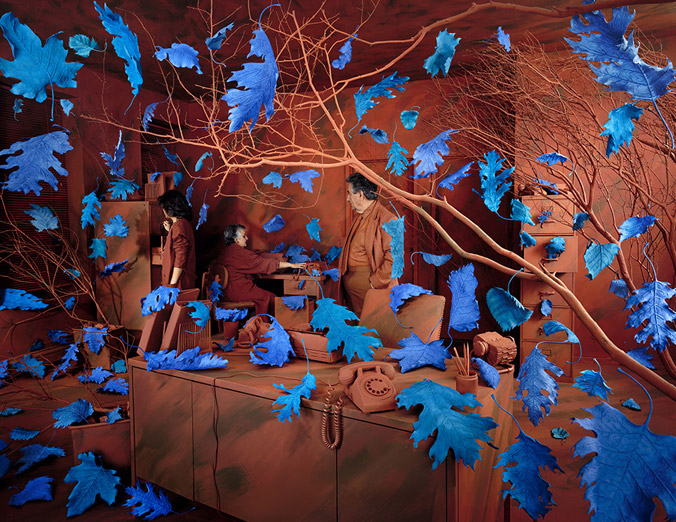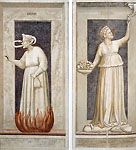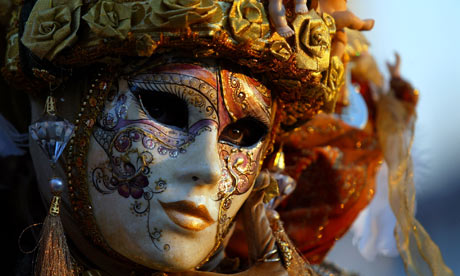
Step one: put out boxes full of pastel paint for people to step in. Step two: Lie down. Step three: allow them to walk all over you. Or something along those lines. This is the process of an artist currently being shown at a gallery here in Bologna. The Blu Gallery, a gallery sponsored by the modern art museum in Bologna, called MAMBO, is hosting Tatsunori Kano, a conceptual and experimental artist. The goal of this gallery is to be open to passerby and allow them to few the process of the artists. In this spirit, Kano’s current work is pulled out onto the street once every week and pedestrians are offered the chance to dip their shoes in colored pastel powders (a different color each week) and to walk across the painting, leaving whatever kind of tracks that they want. When the Tatsunori thinks it is ready he pulls it back into the gallery and sets to work on it himself. He uses different techniques to adjust the painting to his liking, including sprays, dusts, acrylics, and a whole array of strange brushes, not to mention shoes. It’s a really cool experience to watch him go to work on the piece. He moves so fast dipping brushes into jars and tapping powder onto the work as if he were planting grass seeds on a lawn. He picks up a giant straw and blows away the excess dust, clearing his workspace to know what he has. Kano climbs up a ladder to get a better view of the piece. It’s really quite exciting.

You may be wondering why I ended up in some gallery on the streets of Bologna. Or you may just as easily not be wondering and I just needed some way of transitioning into it. Either way, it’s a neat story, so I’m going to tell it (and yes, I did just say neat). I was walking down one of the streets this past Friday because I had to go to a bank that ate my ATM card the night before. They ended up not having it, so I’m a little screwed, but whatever… right? Anyway, I passed this gallery on the way there and liked the looks of some of the works on the wall. On my way back I stopped in and started looking around. The gallery manager started talking to me (in Italian, I felt so cool!) and we talked about the artist and about arts, inc. at UofM. And Tatsunori Kano himself showed up and started talking to me. They told me about the process and the pedestrian aspect of the work. And then, to my surprise and excitement, he opened up a shoebox of blue dust and gave me a private go at the piece! So I started walking around on it with one of my blue shoes, and I was the only blue on it. Then he joined me and we just walked and jumped around on it. They told me to come back, so this weekend when the gallery was opened up and he was working on it I visited again. It was such a great experience, both for my Italian development and to see Kano’s process. Never turn down such an opportunity! That is what I learned from this.

http://www.youtube.com/watch?v=brG4yXeZeq0
I also found this video of him working on this piece; it’s kind of strange and long, but you can check it out and skim. There is this funny part in the middle where this guy in the background is eating something and awkwardly trying to move behind Kano. Worth a laugh, or at least a giggle…heehee. The same day that this happened I found a great bakery that has whole grain breadstuffs and a huge variety of yumminess, all biologically grown. All in all, a really great day!!!!

Happy spring everyone! I hope the weather doesn’t stay so crazy back there in Michigan J It’s really funny here though. They had a huge amount of snow for two weeks this year. They hadn’t seen snow stick to the ground in 60 years, and this year there were at least 2 feet! And because of this freak weather and the hilarious chaos that ensued (no lie, supermarkets were emptied out like in a zombie apocalypse) a picture book of the snow is being published and released tomorrow! A picture book! A book is being published about the snow in Bologna! Now we know why Italy is not the world leader in anything.

















